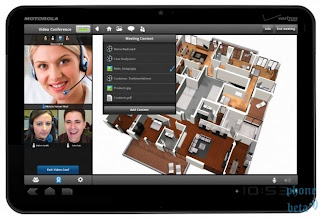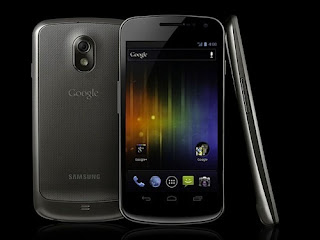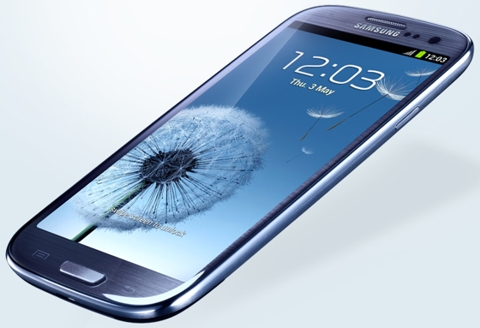(Reuters) -
BlackBerry will offer technology to separate and make secure both work and personal data on mobile devices powered by Google Inc's Android platform and by Apple Inc's iOS operating system, the company said on Thursday.
The new feature could help
BlackBerry sell high-margin services to enterprise clients even if many, or all, of their workers are using smartphones made by
BlackBerry's competitors. That may be crucial for the company as it has lost a vast amount of market share to the iPhone and to Android devices, such as Samsung Electronics Co's Galaxy line.
Jefferies analyst Peter Misek said he expects
BlackBerry's device management software to gain traction this year, and boost revenue next year.
"Supporting devices with the best, most secure, and easiest-to-use mobile solution should enable RIM to transform into what we believe is an attractive model," he said in a note to clients.
The offering could help
BlackBerry shore up its profitable services business.
BlackBerry's shares plunged in December after it said it would change the way it charges for services, cutting fees for customers that do not need advanced security and other enhanced features.
The new Secure Work Space feature will be available before the end of June, and will be managed through
BlackBerry Enterprise Service 10, the platform that allows
BlackBerry's corporate and government clients to handle devices using different operating systems on their networks.
BlackBerry said the feature fences off corporate email, calendar, contacts, tasks, memos, web browsing and document editing from personal apps and content, which could be less secure.
BALANCING ACT
In a bid to regain market share and return to profit,
BlackBerry introduced a new line of smartphones powered by its
BlackBerry 10 operating system earlier this year.
The touch screen version, dubbed the Z10, is on sale in more than 20 countries, while a device called the Q10, with a physical keyboard, will be available in April.
The new devices have a feature called Balance, which keeps corporate and personal data separate. It allows information technology departments to manage the corporate content on a device, while ensuring privacy for users, who can store and use personal apps and content on the same phone without corporate oversight.
With Secure Work Space, "we're extending as many of these (Balance) features as possible to other platforms," David Smith,
BlackBerry's head of mobile enterprise computing, said in a statement.
BlackBerry's move comes as Samsung, whose Galaxy devices have gained great popularity, attempts to make itself a more viable option for business customers with security features such as Samsung Knox and SAFE, or Samsung for Enterprise.
BlackBerry said Secure Work Space means clients would not need to configure and manage expensive virtual private network (VPN) infrastructure in order to give workers' devices access to data and applications that reside behind corporate firewalls.
"Secure Work Space also offers the same end-to-end encryption for data in transit as we have offered on
BlackBerry for many years, so there is no need for a VPN," Peter Devenyi, head of enterprise software, said in an interview.
SELLING SERVICES
The new feature could also help stem declines in
BlackBerry's service revenue. That business has long been a cash cow for
BlackBerry because of the large clients that pay to use its extensive network and security offerings.
However, the company has been under pressure to reduce its infrastructure access fees, and opted to do so during the transition to
BlackBerry 10. Due to the changes,
BlackBerry's service revenue is expected to decline over the course of this year.
Giving its large array of corporate clients the ability to manage
BlackBerry devices, along with Android smartphones and iPhones on their networks might encourage both corporate and government clients to continue to pay for and use
BlackBerry's device management services.
BlackBerry plans to report quarterly results on March 28.
Last week, Chief Executive Thorsten Heins said sales of the Z10 had surpassed
BlackBerry's expectations in emerging markets such as India, where cheaper entry-level phones are typically popular.
On Wednesday, the company said it had received an order for 1 million
BlackBerry 10 smartphones - the largest order it has ever had from a single customer - and its shares jumped.
BlackBerry's volatile stock closed up 8.2 percent at $15.65 on the Nasdaq on Wednesday, while its Toronto-listed shares rose by a similar margin to C$16.04.
The shares pared gains on Thursday, falling 2.3 percent to $15.29 in late morning trading on the Nasdaq. In Toronto, its shares were 2 percent lower at C$15.72.
(Reporting by Euan Rocha and Allison Martell; Editing by Jeffrey Benkoe, Lisa Von Ahn and Peter Galloway)









 CLICK TO SEE SPECIFICATIONS
CLICK TO SEE SPECIFICATIONS


























